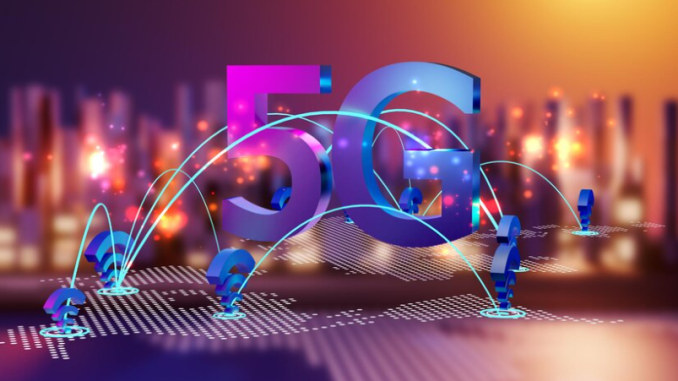
In tech’s march, few developments have occasioned as much flurry and anticipation as the oncoming 5G networks. Not only does this fifth-generation wireless technology promise faster mobile-device speeds it will fundamentally transform whole industries and their products. Particularly in the realms of the Internet of Things (IoT) and connected devices. This article explores 5G’s profound impact on the Internet of Things, offering fresh insight into how these two advancing technologies will merge to change business altogether.
Unleashing the Power of Connectivity
Ultimately, IoT is about connecting various career-oriented equipment and systems so that they can exchange messages, collect information and share it seamlessly. 5G is the lynchpin of this interconnected ecosystem. Unlike its ancestors, 5G enjoys much less signal delay, it ushers in a big increase in data rate and throughput. Only-under 5G developments such as these make possible real-time communication between two things like smart cars or smart home appliances.
The advantages of this leap in network performance for IoT applications are twofold. Firstly, 5G enables all sorts of new deployment possibilities that were previously out of reach due to network congestion (hence cheaper data connection) and inadequate network throughput. hastening the arrival of commercial IoT goods Second, 5G-powered IoT devices will radically expand the range of functions–as now limited primarily by network bandwidth.
Raising Efficiency And Promoting Productivity
One of the most immediate gains of 5G for IoT deployments will be that efficiency and productivity are both greatly enhanced. Industries which require real-time data processing where every millisecond counts–such as manufacturing, logistics and medicine–all those stand to gain vast benefits from 5G-powered IoT solutions. For example, in manufacturing 5G can enable ultra-rapid control of automated systems down to minute levels and this approach will result in combined operations, less downtime–and higher productivity across the board. Similarly, with the help of 5G-powered IoT devices, healthcare professionals will see an end to inaccurate measurements or delays–and thrilling advances in patient care delivery become possible.
Hosting Advanced Functions
5G opens the door to a new era of advanced IoT applications that were pre-viously impractical or even not possible. One such area is autonomous vehicles, where ultra-low latency and high reliability are essential for safe operation. With 5G network, vehicles can communicate in real time with other vehicles, and also with infrastructure: for example predictive maintenance or traffic optimization are enabled through this technology. Similarly, smart cities may benefit from 5G-powered IoT sensors for resource management that is more intelligent, public safety enhanced and environmental protection’s practical implementation.
Heightening Consumer Experiences
For the consumer, 5G and IoT integration constitutes a grand enrichment spanning g a direction. f With the arrival of fifth-generation mobile communications networks for example, high-definition video content may flow smoothly via 5G IoT devices into living rooms where said users only see the television sets and wear augmented reality (AR) eyeglasses. This not only enhances viewing pleasures but also stimulates interactive and immersive content creations. Similarly, when it comes to smart homes., 5G provides homeowners with faster and more reliable connections for their IOT devices—from smart thermostats and security cameras to voice-activated assistants-ultimately succeeding in creating an integrated living system.
Finding A Way Thru Difficulties and Considerations
While the potential of 5G-enabled IoT may be bright, several challenges and considerations call for attention. Security is still a major concern, as the ever-increasing number of connected devices means that it is easier to launch hacking attacks. Strong security protocols and procedures must be put in place when handling sensitive data so that unauthorized access may be impossible. Another is infrastructure, for the widespread deployment of 5G networks will involve major investments in network infra-struction: you cannot sit still any longer. Not to meet these challenges head-on would be sheer folly.(“(G-powered IoT ecosystems may be the low-hanging fruit for industries that adapt gracefully to this new mobile communications paradigm. )
I believe that five years from now (1996), many people will look back on the current form of information revolution and say, “It was in those rough times that we began to grasp its essence.”Even if the structure is repairable, is that really the right thing to do?First, we can stick to traditional economics and undermine the national standard payment system. The price system is so successful that there has never been an alternative to it. It is simply not necessary to create a new system for national funds transfers.Now that the old form of reproduction is being swept away, the old way of thinking should be reconsidered. What must be changed, it appears to anybody who has even looked at society and technology, is not the way that people are but how they think they are.People themselves are the most important resource. Education is good, but every educational institution can only educate a certain number of people, and must concentrate on teaching them to be teachers. Therefore, the objective must be not only to provide general knowledge and skills training, but also to cultivate an atmosphere in which learning from each other is encouraged.